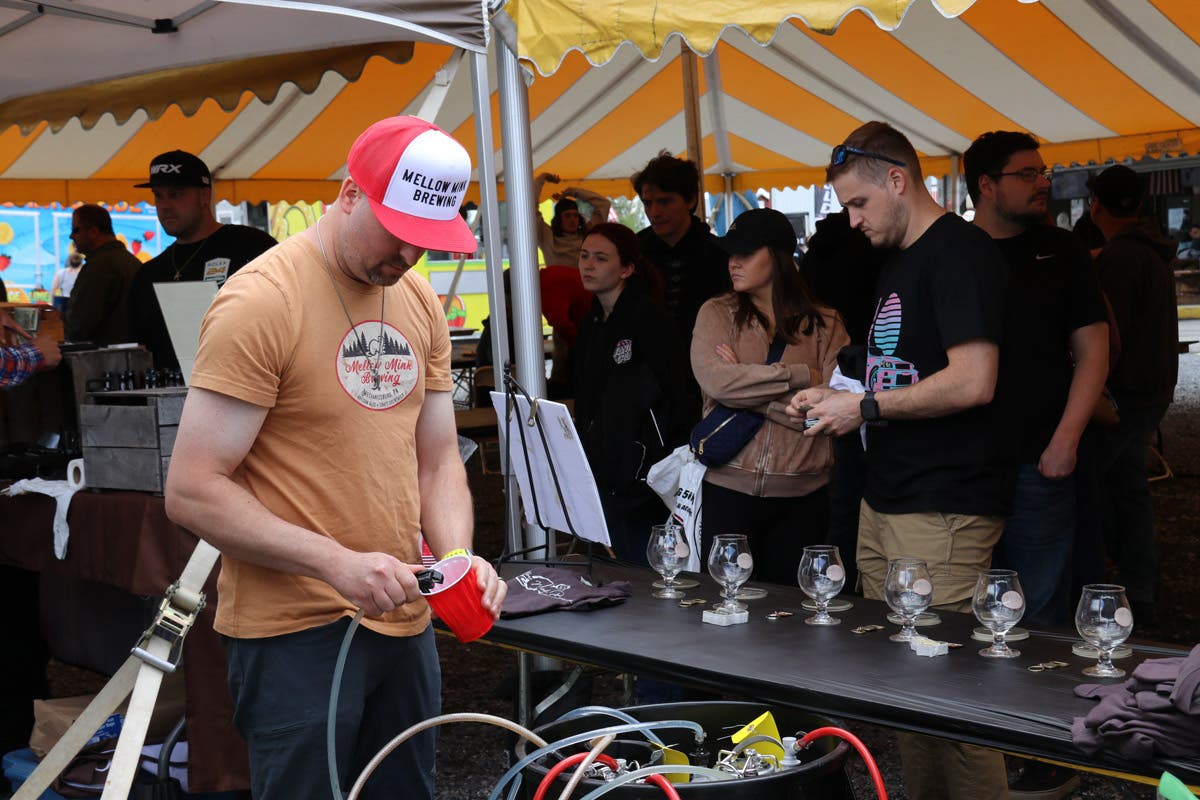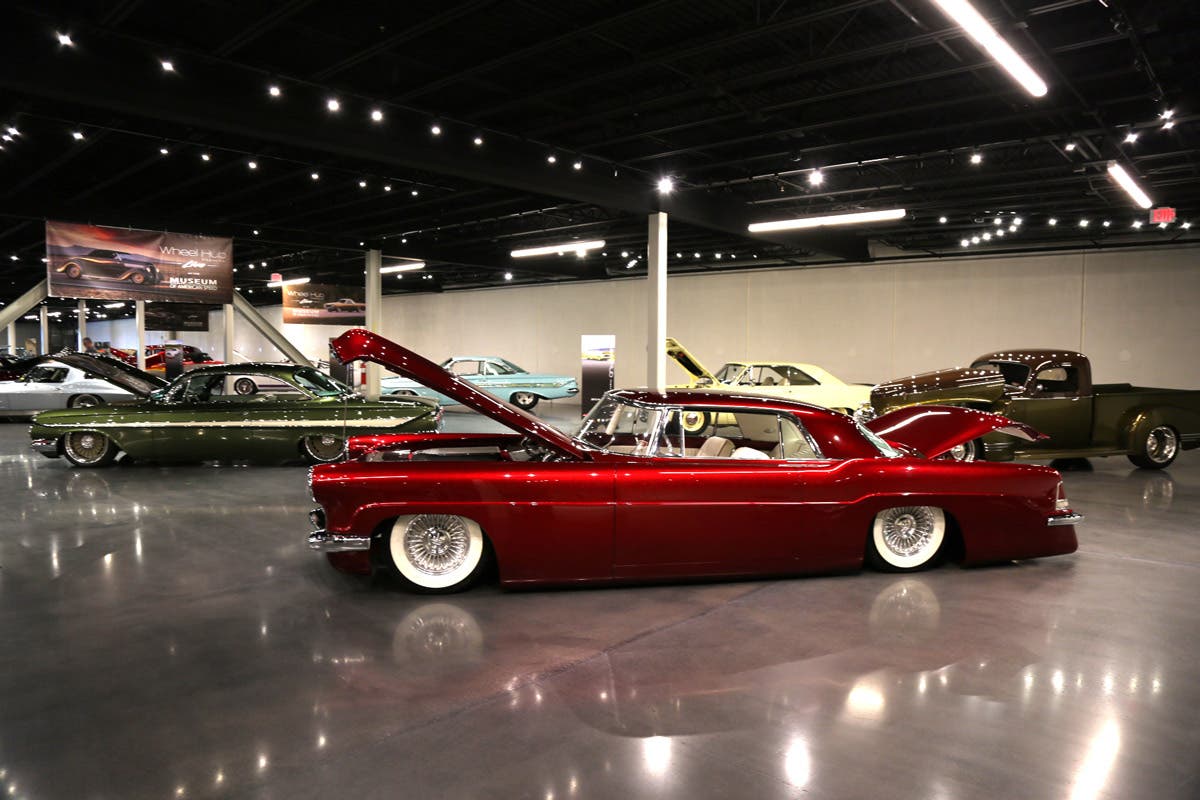Needing a thorough washing and detailing inside and out to get rid of its “storage patina,” this 1937 Nash Lafayette 400 sedan was recently offered for sale at a Wisconsin estate auction. It sold for $5,750.
Story and photos by Ron Kowalke
Many old car hobbyists have plans to travel to Arizona to attend the upcoming mid-January collector vehicle auctions, while others will monitor the action on TV or the Web. Either way, there is much anticipation of seeing rare and desirable cars being bought and sold at the beginning of a new year.
Many collector vehicles will be purchased at these Arizona auctions. Some will sell for fair market value, while others will attract record-setting bids. That’s not an uncommon scenario at most auctions. But, with a resurgent economy of late and the collector vehicle hobby showing resiliency during the worst of the economic storm, chances are good there will be a record number of high-dollar sales in Arizona.
While that healthy prognosis bodes well for those involved in the January Arizona auction scene, the reality is that the buying and selling of collector vehicles takes place all year round and in all parts of the country. The old car hobby is also populated by a good number of enthusiasts who indulge in their automotive passions on a strict budget. While a trip to Arizona in January — especially for those who reside in colder regions of the country — would be a memorable experience, not everybody can afford such a vacation.
But being on a budget shouldn’t preclude hobbyists from acquiring and enjoying the collector vehicles they want. Regardless of financial status, obtaining a quality collector vehicle for the “right” price just takes a sound strategy and a good deal of work upfront. The days of finding an original 427-cid/435-hp 1967 Corvette tucked away in the garage of an owner clueless about its worth are over.
One approach
Perry Merckx has been a friend of mine for more than 40 years. We enjoy many of the same hobbies — old cars, of course, ranking right up there.
Like many old car enthusiasts, Merckx enjoys most types of cars and learning about their history, but his personal collection focus is on “Blue Oval” products. His current stable of Fords includes a 1964 Galaxie 500 hardtop, ’72 Gran Torino fastback and a ’53 flathead V-8 and early-’30s Ford frame for a future hot rod project.
Merckx spent much of his youth as an auto mechanic, so he’s a “hand’s-on” guy. He does all of his own restoration work, including engine and transmission rebuilds and body work. This ability to tackle work that many hobbyists might find too intimidating stems from his vast experience working on cars. Also — probably more so — it’s been dictated by being on a budget, as Merckx is a family man with three college-age children. For Merckx to have and enjoy the cars he desires, he’s had to learn how to do things himself.
One smart thing Merckx has done is take full advantage of the inexpensive automotive-related night classes offered at a local technical college. He’s spent many nights there learning restoration techniques and making use of the school’s shop and tools. He not only learns new restoration techniques, but he takes components from his cars to work on during class. The instructors of these classes have the know-how that they’re willing to impart, and Merckx is not afraid to ask questions and take notes. Also, this knowledge of how to properly restore a car comes in handy when looking at cars to buy. An improperly restored car has the potential to cost its new owner money down the line to maintain its appearance or, worse, keep it operational. If you can’t afford expensive repairs, you can easily end up with a garage paperweight and a resale nightmare.
State car at an estate sale
Since he estimates his start-from-scratch Ford hot rod project will take several years to complete, Merckx is interested in acquiring a car from the 1930s to add to his collection. I’m not sure if he’s going through a mid-life “gangster fixation,” but he has a firm idea of what this particular acquisition must be. It must be a survivor-class car, original (including being numbers matching) and need nothing more to be operational than a good detailing. Because a popular ’30s Ford in this condition would likely exceed what he can afford to spend, Merckx has opened his search to finding the “right car,” rather than strictly a Ford.
A fan of estate sales and automotive business-closing auctions —where he often acquires tools and materials needed for his restoration work at reasonable prices — Merckx found a car this past fall at an estate auction that met his criteria. The car was also manufactured in Wisconsin and offered a home-state connection — a benefit he hadn’t considered. It was also a one-year-only model, which enhances its rarity factor and uniqueness.
A local auction company was presiding over the sale of a house and all of its belongings formerly owned by an elderly couple. Among the items offered was the couple’s 1937 Nash Lafayette 400 sedan that was promoted as being a running car.
Lafayette Motors began in Indianapolis in 1920 as a maker of luxury automobiles. Not long after that, the company moved to Milwaukee, Wis. The president and major stockholder for Lafayette Motors was Charles Nash, also president of the Nash Motor Co.
The luxury Lafayettes did not sell well enough for the brand to continue, and the company was absorbed by Nash Motor Co. The Lafayette Motors plant then was converted to produce Ajax automobiles.
The Lafayette name was re-introduced in 1934 as a separate low-priced companion car within the Nash lineup. It remained independent until 1937, then it became Nash’s entry-level model. It remained that way through the 1940 model year, then was replaced by Nash’s new unibodied 600 model in ’41.
The Lafayette was as well-maintained on the inside as it was externally.
Homework
The week before the auction, Merckx drove to the sale site to preview the car. This allowed for a thorough inspection of the Lafayette with no crowds to contend with. Prior to making this trip, Merckx used Krause Publications’ Standard Catalog of American Cars 1805-1942 to research serial/body/engine numbers for the 1937 Lafayette. He also studied Old Cars Report Price Guide to find the value of this Nash in each of the six condition grades to be prepared for any condition the car was in when he arrived.
The Lafayette’s serial/body/engine numbers all checked out, so the car passed Merckx’s first requirement of being numbers matching. Merckx next crawled under, around and inside the car to inspect for hidden rust, body filler, non-matching paint patches, non-factory welds or frame crimping that would be evidence of collision repairs. He also looked for damage from rodents and fluid leaks, and then tested window cranks, hood latches, pulled the gas cap to smell for “varnished” gas and pulled and inspected the engine’s dipstick to check for gummed residue and the smell of burnt oil. At that point, he was trying to assess what might have to be repaired and at what additional cost, which factors into how much to bid on the car.
He determined, overall, the car was in fine shape, and, more importantly, operational as promoted. It retained its original paint, which had dulled over time, but that’s to be expected. There was also a chunk missing from the driver’s side armrest and some surface scratches and a few minor stone dimples, but nothing serious. The Lafayette also needed a thorough washing and detailing as it was last registered for road use in 1999, and had acquired “storage patina.”
Using the 1 through 6 condition rating scale explanation in the Old Cars Report Price Guide, Merckx determined the Lafayette’s current condition placed it squarely between number 3 and 4. The condition 3 value was $6,800 and 4 dropped to $3,020. Merckx calculated the split between the two to be just under $5,000, but due to the Lafayette’s overall good original condition, rarity and completeness, he settled on $5,500 as what he was willing and could afford to pay to acquire the car.
Joining him on the day of the auction to lend moral support, I watched as the Lafayette came up for auction. Starting at $1,000, there appeared to be a handful of bidders interested. By the time the bidding climbed to $5,000, only Merckx and another man remained in the hunt.
I’d like nothing more than to end this story on a happy note, but it wasn’t meant to be. Merckx’s bid of $5,500 was trumped by the other bidder, who got the Lafayette for $5,750. As disappointed as I was that my friend didn’t get the car he wanted, I admired the fact that he stuck to his strategy and didn’t waver when the price of the Lafayette went beyond his $5,500 threshold.
At what price the competing bidder would have dropped out is something we’ll never know. But getting caught up in bidding fever in the heat of the moment — thinking “just one more bid” — can easily cause a biddeer to pay more for a car than it’s worth or lead them to spend beyond their means. Nothing dulls the enjoyment of collector vehicle ownership more than being upside-down in a purchase.
A sound strategy doesn’t guarantee you’ll get a vehicle you are after. But, not investing the time and work necessary beforehand to thoroughly check out a potential purchase, and not coming up with a price threshold that’s agreeable to your budget, will almost certainly guarantee failure.
More Resources For Car Collectors:
- Classic car price guides, research, books, back issues of Old Cars Weekly & more
- Get expert restoration advice for your classic car
- Get car pricing, data and history all in one place
- Sign up for Old Cars Weekly's FREE email newsletter
- Need to buy or sell your classic car? Looking for parts or memorabilia? Search our huge online classified marketplace








